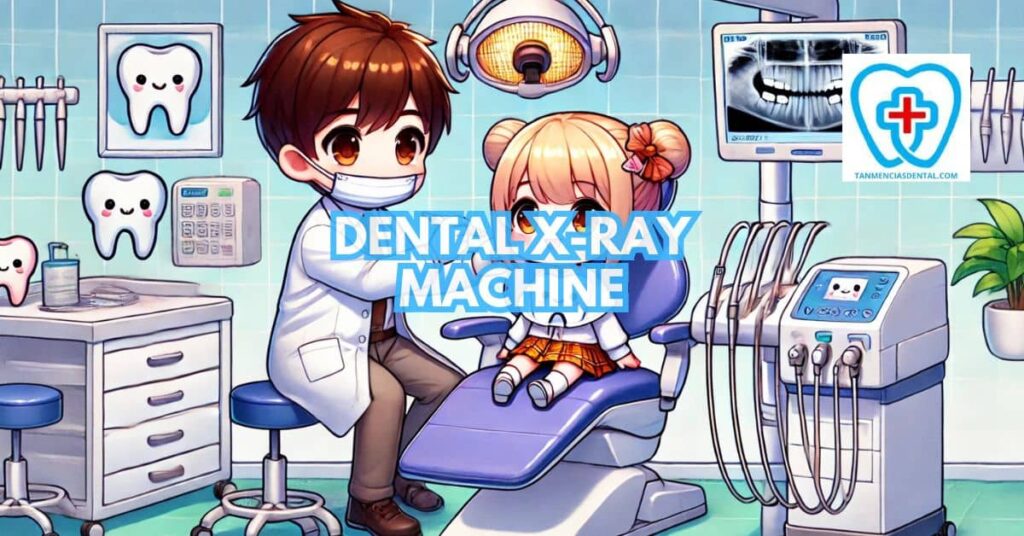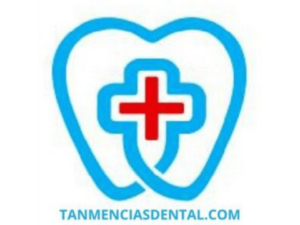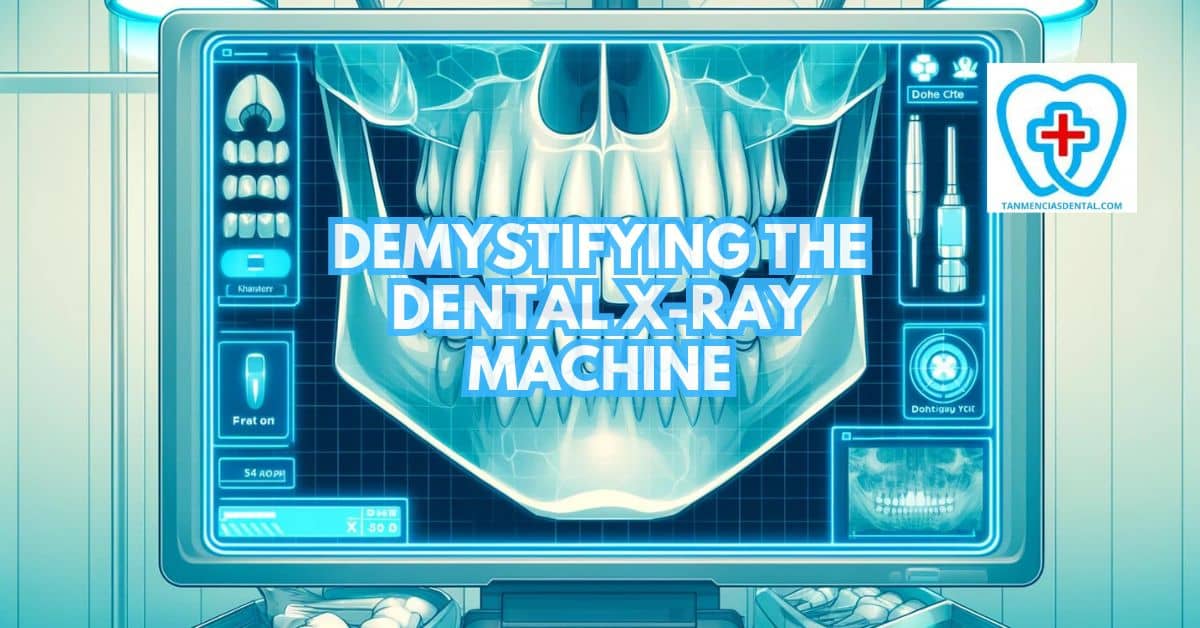Dental x-ray machines are essential tools for keeping your teeth and mouth healthy.
They use a small amount of radiation to take detailed pictures of your teeth and bones.
Many people have questions about how dental x-ray machines work and whether they are safe.
We’ll explain the different types of dental x-ray machines, how they operate, the safety measures in place, and the benefits they provide.
By understanding these aspects, you will see why dental X-ray machines are a vital part of maintaining good oral health.
1. Unveiling the Two Types of Dental X-Ray Machines
There are two main types of dental X-ray machines: intraoral and extraoral.
Intraoral X-rays are taken inside the mouth and are the most common type used by dentists.
These include bitewing, periapical, and occlusal X-rays, each serving different diagnostic purposes.
Extraoral X-rays, taken outside the mouth, provide a broader view of the jaw and skull, such as panoramic and cephalometric X-rays.
Knowing the differences between these types helps you understand which X-ray your dentist might recommend and why.
🦷 How to Pick the Right Teeth Whitening Service in Marikina
2. Shedding Light on How Dental X-Rays Work
Dental X-rays function by emitting a small amount of radiation that passes through your mouth.
Different tissues absorb this radiation at different rates, creating a detailed image of your teeth and bones.
These images help dentists see cavities, bone loss, and other issues that aren’t visible during a regular exam.
Modern dental X-ray machines use digital technology, which reduces radiation exposure and produces images almost instantly.
Understanding this process can help you feel more comfortable during your X-ray.
🦷 Why Teeth Whitening Services Are So Popular Now
3. Safety First: Understanding X-Ray Precautions in Dentistry
Safety is a primary concern in dental radiography.
Dentists use the lowest possible radiation dose to get the necessary images.
Protective measures, such as lead aprons and thyroid collars, are used to shield other parts of your body from exposure.
Digital X-ray machines further reduce radiation levels compared to traditional film X-rays.
Being aware of these precautions can reassure you about the safety of dental X-rays.
🦷 Should Dentists Be Board Certified? The Debate
4. Dental X-Rays for Kids: What Parents Should Know
When it comes to children’s dental care, X-rays play a key role in finding problems early.
Dentists use special safety measures, like lead aprons, to protect kids from unnecessary radiation.
Common types of X-rays for children include bitewing and panoramic X-rays, which help check for cavities and jaw development.
Early detection through X-rays can prevent bigger dental issues later on.
By understanding how and why X-rays are used for children, parents can feel confident about their child’s dental health.
🦷 Why Choose an Advanced Dental Clinic in Marikina?

5. Beyond the Surface: How X-Rays Help Dentists Diagnose Hidden Issues
X-rays enable dentists to see beyond the visible surfaces of your teeth and gums.
They can detect cavities, bone loss, impacted teeth, and other hidden issues that are not visible during a routine dental exam.
Early detection through X-rays allows for more effective and less invasive treatments.
This can prevent minor problems from becoming major issues.
Understanding the diagnostic power of X-rays highlights their importance in maintaining your oral health.
🦷 Essential Dental Care Kit Items to Prevent Cavities
6. X-Ray Frequency: How Often Should You Expect Them?
The frequency of dental X-rays varies based on individual needs and dental history.
Some patients may require X-rays annually, especially if they are prone to cavities or other dental issues.
Others might only need X-rays every few years if they have a low risk of dental problems.
Your dentist will evaluate your oral health and recommend an appropriate schedule.
Regular X-rays ensure that any developing issues are caught early, allowing for timely treatment.
🦷 How Advanced Dental Clinics Are Changing Modern Dentistry
7. Innovation at Play: Exploring Alternatives in Dental Imaging
While traditional X-rays are widely used, innovative alternatives are emerging in dental imaging.
Digital X-rays, for instance, offer quicker results and lower radiation exposure compared to traditional film X-rays.
Cone-beam CT scans provide detailed 3D images, useful for complex cases such as implant planning or orthodontics.
These advancements enhance diagnostic accuracy and patient safety.
Exploring these options with your dentist can help you understand the best imaging method for your needs.
🦷 Mistakes to Avoid When Brushing After a Root Canal
8. Preparing for Your Dental X-Ray: A Step-by-Step Guide
Preparing for a dental X-ray is straightforward and simple.
Your dentist will ask you to remove any metal objects, such as jewelry or glasses, from your mouth and face.
You will then be comfortably positioned in the dental chair, and a lead apron will be placed over your body for protection.
The X-ray machine will be adjusted to capture the necessary images, which only takes a few minutes.
Understanding these steps can help you feel more at ease during the process.
🦷 How to Pick the Best Gel Trays for Teeth Whitening
9. Open Communication is Key: Questions to Ask Your Dentist About X-Rays
Having an open dialogue with your dentist about dental X-rays is essential.
Ask why the X-ray is needed and what type will be used.
Inquire about the safety measures in place to minimize radiation exposure.
Understanding the benefits and any potential risks can help you make informed decisions about your dental care.
Being proactive with your questions ensures you are comfortable and knowledgeable about the procedure.
🦷 Why You Should Use Bananas for Teeth Whitening
10. Knowledge is Power: Why Dental X-Rays Are Important for Your Smile
Dental X-rays are a vital tool in maintaining a healthy smile.
They enable dentists to detect issues early, such as cavities, bone loss, and impacted teeth, which might not be visible during a routine exam.
Early detection through X-rays allows for prompt and often less invasive treatments, preventing minor problems from becoming major ones.
Regular X-rays help ensure long-term oral health by monitoring changes over time.
Understanding the importance of dental X-rays underscores their role in keeping your smile healthy and bright.
🦷 Reasons to Brush Your Teeth: It’s More Than Just Fresh Breath
11. (Bonus) A Brief Look Back: The Evolution of Dental X-Ray Technology
Dental X-ray technology has come a long way since its inception.
Early X-ray machines required long exposure times and produced less detailed images, often involving higher radiation levels.
Over the years, advancements such as digital X-rays have significantly improved image quality and reduced radiation exposure.
The introduction of cone beam CT scans has further revolutionized dental imaging, providing detailed 3D images for more accurate diagnoses.
Reflecting on this evolution highlights the continuous improvements in safety and effectiveness in dental care.
👨⚕️ Conclusion
Understanding dental X-ray machines and their benefits can empower you as a patient.
With this knowledge, you can make informed decisions about your dental care and feel more confident during your visits.
Always feel free to discuss any concerns or questions with your dentist to ensure you are comfortable with the procedures.
Being informed helps you take an active role in maintaining your oral health.
Embracing the benefits of dental X-rays contributes to a healthier, brighter smile for the long term.
😊 Self-Promotion
At Tan-Mencias Dental Clinic in Parang, Marikina City, we are dedicated to providing top-notch dental care in a warm and friendly environment.
Whether you have questions or need to book an appointment, our team is here to help.
You can reach us by calling 9171451074, messaging us on our Facebook page, or using our website’s contact form.
We prioritize your comfort and oral health, ensuring a positive and stress-free experience every time you visit.
Come see us, and let us help you achieve the smile you’ve always wanted!

